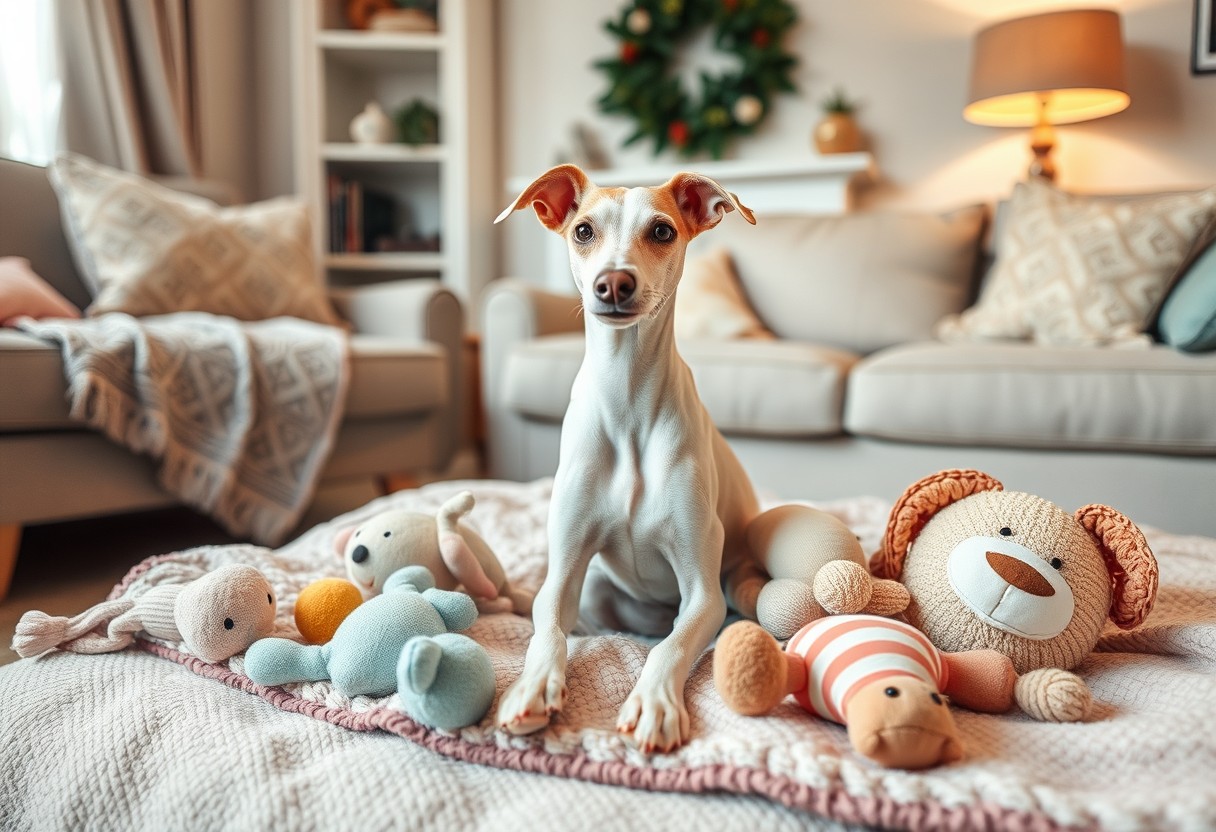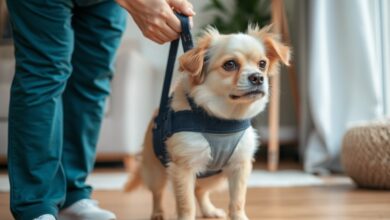Why Are Whippets So Nervous? Understanding Their Anxiety

Anxiety in whippets can often leave you wondering why your beloved companion seems perpetually on edge. As a breed known for their sensitivity, whippets can easily pick up on your emotions, making them prone to feelings of unease. Understanding the triggers of their anxiety—such as loud noises, unfamiliar environments, or separation from you—can help you provide better care. By recognizing these signs and implementing positive reinforcement training, you can foster a more calm and secure environment for your whippet, ensuring their mental well-being and strengthening the bond you share.

Key Takeaways:
- Genetic predisposition: Whippets may have a tendency towards anxiety due to their genetic background, as certain breeds are more susceptible to stress and nervous behaviors.
- Environmental factors: Whippets can become anxious due to changes in their environment, loud noises, or unfamiliar situations, making a stable home environment important for their well-being.
- Socialization needs: Early socialization and exposure to various experiences can help reduce anxiety in Whippets, leading to a more balanced and confident temperament.
Understanding Whippets’ Temperament
Before delving into the unique qualities of whippets, it’s important to recognize that their temperament is largely influenced by their history and breeding. Understanding these factors will help you comprehend why they may exhibit signs of nervousness and anxiety.
Origin and Breeding History
Understanding the historical context of whippets reveals their roots in hunting and racing, where they were bred for speed and agility. This selective breeding often required heightened sensitivity to stimuli, which may inadvertently foster anxiety-related behaviors in modern whippets. As a responsible owner, consider adopting training practices that support their emotional health.
Common Temperamental Traits
Any whippet you encounter will likely display a range of common temperamental traits, including a deep sensitivity to their environment. They are responsive to stimuli and can be quite perceptive, making them prone to nerves in overwhelming situations. These characteristics underscore the importance of providing a calm and stable environment for your whippet.
Origin of the whippet’s temperament indicates that their highly sensitive nature can translate into anxiety when faced with unexpected noises or unfamiliar situations. This responsiveness may be a double-edged sword: while it can make your whippet incredibly empathetic, it can also lead to heightened stress levels. Being aware of these traits means you can actively create a more comforting environment, minimizing potential triggers for nervousness.
Factors Contributing to Anxiety in Whippets
While understanding why your whippet may be so anxious, it’s important to look at the various factors influencing their behavior. Key influencers can include:
- Environmental stresses
- Genetic predisposition
- Training methods
- Socialization experiences
Thou should consider these influences when working to alleviate your whippet’s anxiety.
Environmental Influences
Anxiety in whippets can be significantly impacted by their environment. Factors such as loud noises, unfamiliar settings, and changes in routine can all exacerbate feelings of nervousness. (Creating a calm, stable environment can greatly assist in managing their anxiety.)
Genetic Predispositions
Along with environmental factors, there are also strong genetic predispositions that may contribute to anxiety in whippets. Specific hereditary traits related to their lineage can make certain individuals more susceptible to anxious behaviors. It is important to understand that lineage considerations can reveal patterns of anxiety within the breed, impacting how you train and support your whippet.
It is important to note that anxiety can be influenced by traits passed down through generations, which means you might see similar patterns in your whippet’s family history. By understanding these genetic factors, you can tailor your approach to address their specific needs more effectively. Furthermore, acknowledging these risks can help you determine if your pet requires additional support or specialized training interventions.

Signs of Anxiety in Whippets
Not all signs of anxiety are immediately noticeable, but being aware of them can help you provide the support your whippet needs. Common indicators include behavioral changes like excessive barking, pacing around the house, or seeking hiding places such as under furniture. These behaviors may occur during stressful situations like thunderstorms or loud noises, which can elevate your dog’s anxiety levels significantly.
Behavioral Indicators
Before addressing anxiety, it’s necessary to recognize the behavioral indicators that may suggest your whippet is feeling anxious. You might notice excessive barking, which can signal distress or a need for attention. Pacing is another common behavior, where your dog may walk back and forth in a repetitive manner, indicating restlessness. Additionally, if your whippet seeks out confined spaces to hide, it may be a sign they are attempting to cope with their anxiety.
Physical Symptoms
Below the surface, anxiety can also manifest through various physical symptoms. You may observe trembling, an increased heart rate, or even changes in your dog’s eating and sleeping patterns. If your whippet suddenly refuses food or seems overly lethargic, these could be red flags of heightened anxiety. (Consulting your veterinarian about these symptoms may be necessary for your dog’s health and well-being.)
Below those behavioral cues, look for additional physical symptoms that indicate your whippet’s anxiety might be more serious than you realize. For example, trembling can occur in response to specific triggers, while an increased heart rate might suggest your dog is in a constant state of worry. Changes in appetite or sleep can further impact your whippet’s overall health, making it necessary to address these issues. (Taking action early can support your whippet in reducing their anxiety.)
Consequently, these signs—whether behavioral or physical—highlight the importance of understanding your whippet’s needs. By recognizing anxiety symptoms early, you can take steps to help your dog feel more secure, ultimately leading to a happier and healthier life. Investing time in their emotional well-being can significantly improve your bond with your whippet.

Strategies for Managing Whippet Anxiety
Many whippet owners struggle with their pet’s anxiety, making it necessary to adopt effective strategies for management. By creating a safe and supportive environment, employing training techniques, and understanding your whippet’s unique needs, you can help ease their nervousness and improve their overall quality of life.
Creating a Safe Environment
One way to promote calmness for your whippet is by creating a safe environment that includes designated comfort zones, noise reduction strategies, and secure spaces. Consider providing a cozy bed or crate that they can retreat to when feeling anxious. Reduce loud noises with soundproofing measures or calming music, and ensure they have access to a familiar and quiet area in your home where they can feel truly safe.
Training and Behavioral Interventions
The training you implement can significantly impact your whippet’s anxiety levels. Techniques such as desensitization and positive reinforcement can help alleviate their fears. Gradually expose your whippet to anxiety triggers in a controlled manner, rewarding them for calm behavior. (Consult with a professional trainer for tailored strategies that work best for your dog’s specific issues.)
To effectively reduce anxiety in your whippet, consider integrating behavioral therapies alongside your training regimen. By focusing on consistency and positive reinforcement, you can build your whippet’s confidence and resilience to stressors. Techniques like rewarding your dog for calm behavior and practicing calming exercises can create lasting improvements. (Always be patient and understanding as you progress through these interventions.)
Health Considerations Related to Anxiety
Keep in mind that your whippet’s mental health is closely linked to their physical well-being. Chronic anxiety can lead to various health issues, including digestive problems, weakened immune function, and cardiovascular stress. It’s important to address your whippet’s anxiety to ensure their overall health remains intact. By prioritizing their mental well-being, you contribute significantly to their physical vitality (consider implementing calming strategies).
The Impact of Anxiety on Physical Health
About 75% of dogs with chronic anxiety develop related physical health issues over time, including digestive disturbances and higher susceptibility to illnesses. Unmanaged anxiety can also lead to changes in eating and sleeping habits, significantly affecting your whippet’s energy levels and overall well-being. Addressing your pet’s anxiety is important to prevent these potential problems from escalating.
Seeking Professional Help
Among some strategies for improving your whippet’s anxiety are consulting with a veterinarian or engaging a professional dog trainer. These experts can provide you with tailored advice and interventions that specifically target your pet’s anxiety issues. By obtaining professional assistance, you’ll be better equipped to navigate the complexities of your whippet’s anxiety.
Even if you feel overwhelmed, seeking help can lead to significant improvements in your whippet’s life. Professional trainers can implement behavior modification techniques, while veterinarians may suggest medications to alleviate anxiety. Both options can create a more comfortable environment for your whippet, ensuring they feel safer and less anxious in their daily lives. This proactive approach can greatly enhance your bond with your beloved pet and promote a balanced life.
Final Words
Upon reflecting, understanding why your Whippet may be anxious is crucial for fostering a supportive and nurturing environment. Recognizing their sensitivity to changes, social interactions, and even their unique physical traits can help you respond appropriately to their needs. Providing positive experiences and consistent training can significantly alleviate their nervousness. For more insights, you can explore Questions and Answers About Whippets | to further support your journey with your Whippet.
FAQ
Q: What are the common signs of anxiety in whippets?
A: Whippets may exhibit several signs of anxiety, including excessive barking, pacing, panting, withdrawal from social interactions, or destructive behavior. They might also display physical symptoms such as trembling or tucking their tails between their legs. It’s important to observe their behavior closely, as anxiety can manifest in various ways, depending on the individual dog’s temperament and experiences.
Q: What factors contribute to a whippet’s anxiety?
A: Several factors can contribute to anxiety in whippets. These may include genetic predispositions, lack of socialization during their formative months, or traumatic experiences. Whippets are sensitive dogs and may become anxious in unfamiliar environments, loud noises, or around aggressive animals. Understanding each dog’s unique background can help owners identify triggers and develop strategies to alleviate their anxiety.
Q: How can I help my whippet cope with their anxiety?
A: There are various strategies you can use to help your whippet manage anxiety. Start by providing a safe and comfortable space for your dog to retreat when feeling stressed. Regular exercise is important for whippets, as physical activity can help reduce anxiety levels. Additionally, consider using desensitization techniques, calming products like anxiety wraps or pheromone diffusers, and consulting a veterinarian or a behaviorist for further guidance tailored to your dog’s specific needs.





